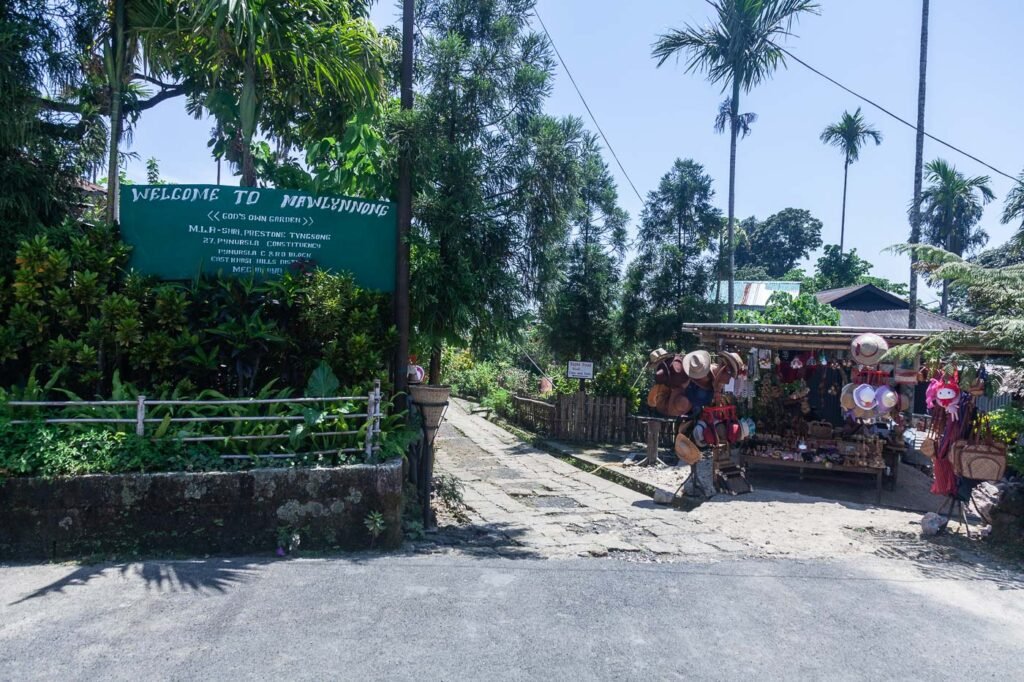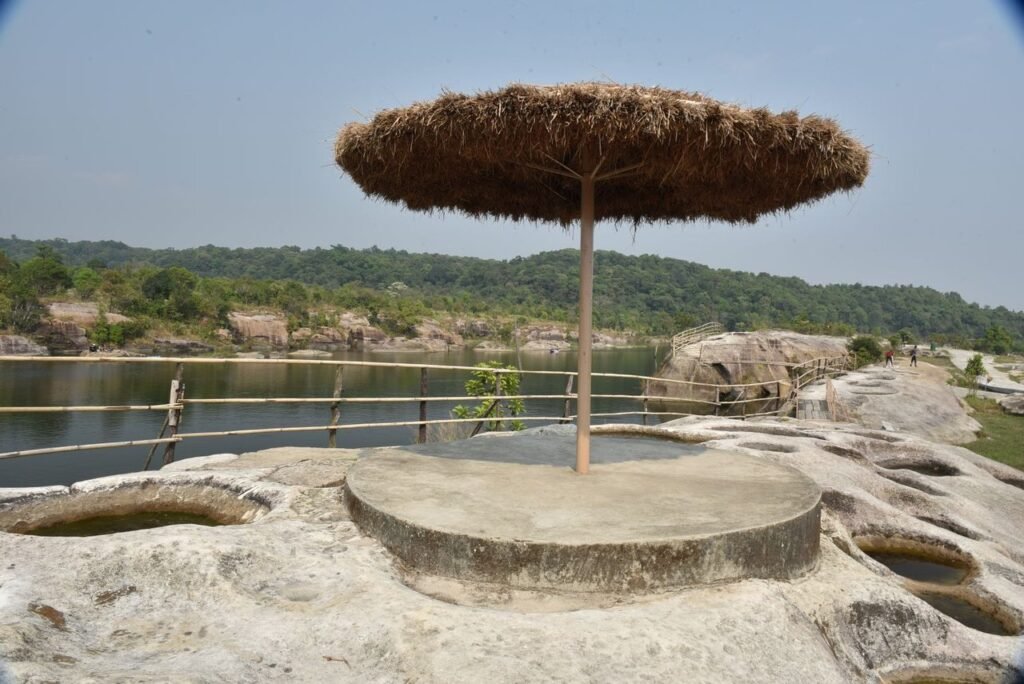Mawlyngbna Village in Meghalaya is a remarkable destination that blends ancient history, vibrant Khasi culture, natural wonders, and modern adventure. Set atop lush hills in the East Khasi Hills district and overlooking the rolling highlands that merge with the plains of Bangladesh, Mawlyngbna promises an authentic and immersive travel experience for nature lovers, history buffs, and adventure seekers alike.
Location and Route
Mawlyngbna Village is located about 60 kilometers south of Shillong, the capital of Meghalaya, nestled in the Mawsynram Tehsil of the East Khasi Hills. The journey from Shillong typically takes about 2.5 to 3 hours by road, with scenic views throughout. The route passes through dramatic Khasi hills and dense forests, making the drive itself a memorable part of the experience. Local taxis, private vehicles, and occasional buses serve the village, and hiking enthusiasts can access some sites by trekking.
Key Details:
History and Archaeological Richness
Mawlyngbna is renowned for its unique geological and historical significance, boasting fossils of ancient animals embedded in limestone rocks, evidence of the area’s underwater history dating back 200 million years. Historically, the village existed in the shadow of Mawsynram and was mainly inhabited by local Khasi tribes engaged in agriculture and betel leaf farming. The region has gradually gained attention since the early 2000s, spurred by government initiatives and eco-tourism projects that have brought better infrastructure and visitor-friendly facilities. The remains of animal footprints at places like Ka Iew Luri-Lura evoke local folklore and beliefs about a time when animals could speak, adding a mythical dimension to the village’s archaeological appeal.
Culture and Community Life
Mawlyngbna is a living repository of Khasi traditions. The Khasi people have resided here for generations, their culture closely bound to the land and its natural cycles. Visitors can experience traditional dances, witness handicrafts such as handlooms, bamboo baskets, and participate in storytelling sessions about Khasi legends. The village museum and community-run workshops allow deeper engagement with local arts and crafts. Homestays and guesthouses offer opportunities to join daily routines, like farming and weaving, providing a genuine experience of Khasi hospitality and cuisine.
Natural Attractions
Mawlyngbna offers a feast of breathtaking natural features:
- Fossil Parks: Fossils embedded in ancient rock slabs are major draws for science enthusiasts.
- Living Root Bridges: Ingenious bioengineering by villagers using the aerial roots of rubber trees over centuries has produced natural, durable bridges that are both functional and awe-inspiring.
- Pitcher Plant Garden: This sanctuary features rare carnivorous pitcher plants that are unique to the region.
- Waterfalls and Natural Pools: The Um Diengkain and Ar Phalat waterfalls, along with serene natural swimming pools, provide picturesque spots for relaxation and photography.
Adventure and Activities
The village has become a hub for eco-adventure activities, managed by the Mawlyngbna Multipurpose Cooperative Society:
- Kayaking and Boating: The tranquil Umkhakoi Lake is a focal point for water sports including kayaking and angling.
- Waterfall Rappelling and Cliff Jumping: For adrenaline seekers, adventure parks offer zip-lining, cliff jumps, and rappelling.
- Trekking and Hiking: Scenic jungle trails lead trekkers through lush forests and rocky outcrops to sites like Split Rock, a massive boulder split in two by the 1897 earthquake.
- Caving: Enthusiasts explore the intricate limestone caves that showcase the area’s geological wonders.
Sustainable Tourism and Revenue
Tourism has significantly impacted Mawlyngbna’s local economy by creating jobs and fostering community development. The community-driven model ensures that locals benefit directly through employment in tourism services, guiding, hospitality, and craft markets. The Mawlyngbna Traveller’s Nest, central to this success, is managed by local youth and cooperatives, providing employment and promoting sustainable tourism. Agriculture, including areca nut and betel leaf cultivation, still plays a vital economic role, but tourism now contributes substantially to household income. The Meghalaya government supports village tourism cooperatives, and a portion of tourism revenue is invested back into conservation and cultural preservation.

Seasonal Events and Festivals
The annual Mawlyngbna Autumn Festival, held every October, showcases local music, cuisine, dances, and Khasi customs. Other events throughout the year preserve and celebrate the region’s intangible cultural heritage, inviting visitors to participate as honored guests.
Accommodation and Amenities
Accommodation options remain limited but authentic, with the Mawlyngbna Traveller’s Nest and several homestays offering basic amenities and immersive experiences. Eco-resorts, camping, and glamping sites provide alternatives for travelers seeking closeness to nature.
FAQs about Mawlyngbna Village
Where is Mawlyngbna Village located?
Mawlyngbna is situated about 60 km south of Shillong in the East Khasi Hills district, not far from Mawsynram, the world’s wettest place.
What are the main attractions in Mawlyngbna?
Key attractions include fossil parks, living root bridges, the Pitcher Plant Garden, Umkhakoi Lake, Split Rock, and waterfalls like Um Diengkain and Ar Phalat.
What is the best time to visit Mawlyngbna?
The ideal time is between October and May for pleasant weather, accessible roads, and festival celebrations.
How does tourism impact village revenue?
Tourism has boosted local income through employment in adventure activities, homestays, guiding, and cultural events, supporting sustainable development.
How can visitors reach Mawlyngbna?
Travellers can drive or hire a taxi from Shillong (about 2.5–3 hours) via well-marked routes through the East Khasi Hills.
Are there adventure activities available?
Yes, adventure seekers enjoy kayaking, cliff jumping, zip-lining, trekking, spelunking, and guided fossil walks throughout the region.
Is Mawlyngbna suitable for cultural tourism?
Absolutely, community-run programs, homestays, handicraft workshops, and annual festivals allow immersive cultural experiences with the Khasi people.
Does the village promote sustainable tourism?
Yes, Mawlyngbna’s tourism model is eco-friendly and community-focused, balancing visitor needs with heritage preservation and local welfare.
What kind of cuisine can visitors expect?
Travellers are treated to traditional Khasi dishes such as Jadoh (spiced rice and pork), Doh Neiiong (pork with black sesame), and market-fresh vegetables, with options for both adventurous and simple palates.
Conclusion
Mawlyngbna Village in Meghalaya is a rare destination where geology, culture, adventure, and sustainable community living come together seamlessly. The fossilized records of prehistoric eras, lush landscapes, vibrant Khasi traditions, and adrenaline-fueled adventure activities make this village a must-visit for travelers seeking immersive, responsible, and transformative journeys. It stands as a testament to the power of eco-tourism, heritage preservation, and local empowerment, its warm hospitality, ancient secrets, and spectacular scenery welcoming the world just as it has for centuries.
